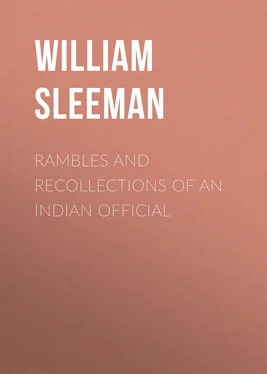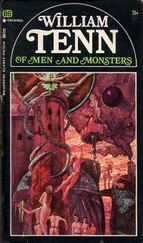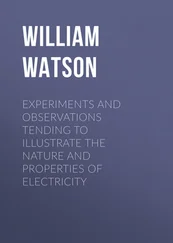William Sleeman - Rambles and Recollections of an Indian Official
Здесь есть возможность читать онлайн «William Sleeman - Rambles and Recollections of an Indian Official» — ознакомительный отрывок электронной книги совершенно бесплатно, а после прочтения отрывка купить полную версию. В некоторых случаях можно слушать аудио, скачать через торрент в формате fb2 и присутствует краткое содержание. Жанр: Путешествия и география, История, foreign_edu, foreign_antique, foreign_prose, на английском языке. Описание произведения, (предисловие) а так же отзывы посетителей доступны на портале библиотеки ЛибКат.
- Название:Rambles and Recollections of an Indian Official
- Автор:
- Жанр:
- Год:неизвестен
- ISBN:нет данных
- Рейтинг книги:4 / 5. Голосов: 1
-
Избранное:Добавить в избранное
- Отзывы:
-
Ваша оценка:
- 80
- 1
- 2
- 3
- 4
- 5
Rambles and Recollections of an Indian Official: краткое содержание, описание и аннотация
Предлагаем к чтению аннотацию, описание, краткое содержание или предисловие (зависит от того, что написал сам автор книги «Rambles and Recollections of an Indian Official»). Если вы не нашли необходимую информацию о книге — напишите в комментариях, мы постараемся отыскать её.
Rambles and Recollections of an Indian Official — читать онлайн ознакомительный отрывок
Ниже представлен текст книги, разбитый по страницам. Система сохранения места последней прочитанной страницы, позволяет с удобством читать онлайн бесплатно книгу «Rambles and Recollections of an Indian Official», без необходимости каждый раз заново искать на чём Вы остановились. Поставьте закладку, и сможете в любой момент перейти на страницу, на которой закончили чтение.
Интервал:
Закладка:
324
The Hyphasis is the Greek name for the river Biās in the Panjāb. Holkar's flight into the Panjāb occurred in 1805, and in the same year the long war with him was terminated by a treaty, much too favourable to the marauding chief. He became insane a few years later, and died in 1811.
325
See note 2,ante .
326
Narsinghpur and Kandelī are practically one town. The Government offices and houses of the European residents are in Kandelī, which is a mile east of Narsinghpur. The original name of Narsinghpur was Gadariā Khērā. The modern name is due to the erection of a large temple to Narsingha, one of the forms of Vishnu. The district of Narsinghpur lies in the Nerbudda valley, west and south-west of Jubbulpore.
327
All classes of Indians still frequently refuse to employ any medicines in cases of either cholera or small-pox, supposing that the attempt to use ordinary human means is an insult to, and a defiance of, the Deity.
328
Vaccination was not practised in India in those days. The practice of it, although still unpopular in most places, has extended sufficiently to check greatly the ravages of small-pox. In many municipal towns vaccination is compulsory.
329
Quem deus vult perdere, prius dementat .
330
The judge cleverly combines the opinions of the adherents of both sects.
331
December, 1835.
332
In the Orchhā State. This seems to be the same town which the author had already visited on his way to Tehrī on the 7th December. Ante , Chapter 19 note [15].
333
Ante , Chapter 12 following note [9].
334
Sodora in the author's text; see ante , Chapter 19, note 11.
335
'Bow-sacrifice.'
336
The tradition is that a prince of this military class was sporting in a river with his thousand wives, when Renukā, the wife of Jamadagni, went to bring water. He offended her, and her husband cursed the prince, but was put to death by him. His son Parasrām was no less a person than the sixth incarnation of Vishnu, who had assumed the human shape merely to destroy these tyrants. He vowed, now that his mother had been insulted, and his father killed, not to leave one on the face of the earth. He destroyed them all twenty-one times, the women with child producing a new race each time. [W. H. S.] The legend is not narrated quite correctly.
337
Rāma Chandra, son of Dasaratha.
338
When Rām set out with his army for Ceylon, he is supposed to have worshipped the little tree called 'cheonkul', which stood near his capital of Ajodhya. It is a wretched little thing, between a shrub and a tree; but I have seen a procession of more than seventy thousand persons attend their prince to the worship of it on the festival of the Dasahara, which is held in celebration of this expedition to Ceylon. [W. H. S.] 'As Arjuna and his brothers worshipped the shumee-tree, the Acacia suma , and hung up their arms upon it, so the Hindus go forth to worship that tree on the festival of the Dasahara. They address the tree under the name of Aparajita, the invincible goddess, sprinkle it with five ambrosial liquids, the 'panchamrit', a mixture of milk, curds, sugar, clarified butter, and honey, wash it with water, and hang garments upon it. They light lamps and burn incense before the symbol of Aparajita, make 'chandlos' upon the tree, sprinkle it with rose-coloured water, and set offerings of food before it' (Balfour, Cyclopaedia , 3rd ed., s.v. 'Dasahara'). The 'cheonkul' is the chhonkar or chhaunkar (Prosopis spicigera , Linn.), described by Growse as follows:—
'Very common throughout the district; occasionally grows to quite a large tree, as in the Dohani Kund at Chaksauli. It is used for religious worship at the festival of the Dasahara, and considered sacred to Siva. The pods (called sangri ) are much used for fodder. Probably chhonkar and sangri , which latter is in some parts of India the name of the tree as well as of the pod, are both dialectical corruptions of the Sanskrit sankara , a name of Siva; for the palatal and sibilant are frequently interchangeable' ('List of Indigenous Trees' in Mathurā, A. District Memoir , 3rd ed., Allahabad, 1883, p. 422). Sundry leguminous trees are used in Dasahara ceremonies in the different parts of India, under varying local names.
339
Credo quia impossibile .
340
This comparison is not a happy one. The elements in some of the Hindoo myths specially repulsive to European taste are their monstrosity, their inartistic and hideous exaggeration, their accumulation of sanguinary horrors, and their childish triviality. Few of the classical myths exhibit these characteristics. The vanity or policy of Tiberius and Alexander in believing themselves to be, or wishing to be believed, divine, has nothing in common with the grotesque imagination of Puranic Hinduism.
341
The roots of Hinduism are so deeply fixed in a thick soil of custom and inherited sentiment, the growth of thousands of years, that English education has less effect than might be expected in loosening the bonds of beliefs which seem to every one but a Hindoo the merest superstition. Hindoos who can read English with fluency, and write it with accuracy, are often extremely devout, and Hindoo devoutness must ever appear to an outsider, even to a European as sympathetic as the author, to be no better than superstition. A Hindoo able to read English with ease has at his command all the rich stores of the knowledge of the West, but very often does not care to taste them. Enmeshed in a web of ritual and belief inseparable from himself, he remains as much as ever a Hindoo, and uses his skill in English merely as an article of professional equipment. 'Good works of history and fiction' do not interest him, and he usually fails to digest and assimilate the physical or biological science administered to him at school or college. In fact, he does not believe it. The monstrous legends of the Purānas continue to be for his mind the realities; while the truths of science are to him phantoms, shadowy and unsubstantial, the outlandish notions of alien and casteless unbelievers. These observations, of course, are not universally true, and a few Hindoos, growing in number, are able to heartily accept and thoroughly assimilate the facts of history and the results of inductive science. But such Hindoos are few, and it may well be doubted if it is possible for a man really to believe the amount of history and science known to an ordinary English schoolboy, and still be a devout Hindoo. The old bottles cannot contain the new wine. The Hindoo scriptures do not treat of history and science in a merely incidental way; they teach, after their fashion, both history and science formally and systematically; grammar, logic, medicine, astronomy, the history of gods and men, are all taught in books which form part of the sacred canon. Inductive science and matter-of-fact history are absolutely destructive of, and irreconcilable with, veneration for the Hindoo scriptures as authoritative and infallible guides. It is impossible, within the narrow limits of a note, to discuss the problems suggested by the author's remarks. Enough, perhaps, has been said to show that the many-rooted banyan tree of Hinduism is in little danger of overthrow from the attacks either of history or of science, not to speak of 'good works of fiction'.
Читать дальшеИнтервал:
Закладка:
Похожие книги на «Rambles and Recollections of an Indian Official»
Представляем Вашему вниманию похожие книги на «Rambles and Recollections of an Indian Official» списком для выбора. Мы отобрали схожую по названию и смыслу литературу в надежде предоставить читателям больше вариантов отыскать новые, интересные, ещё непрочитанные произведения.
Обсуждение, отзывы о книге «Rambles and Recollections of an Indian Official» и просто собственные мнения читателей. Оставьте ваши комментарии, напишите, что Вы думаете о произведении, его смысле или главных героях. Укажите что конкретно понравилось, а что нет, и почему Вы так считаете.












